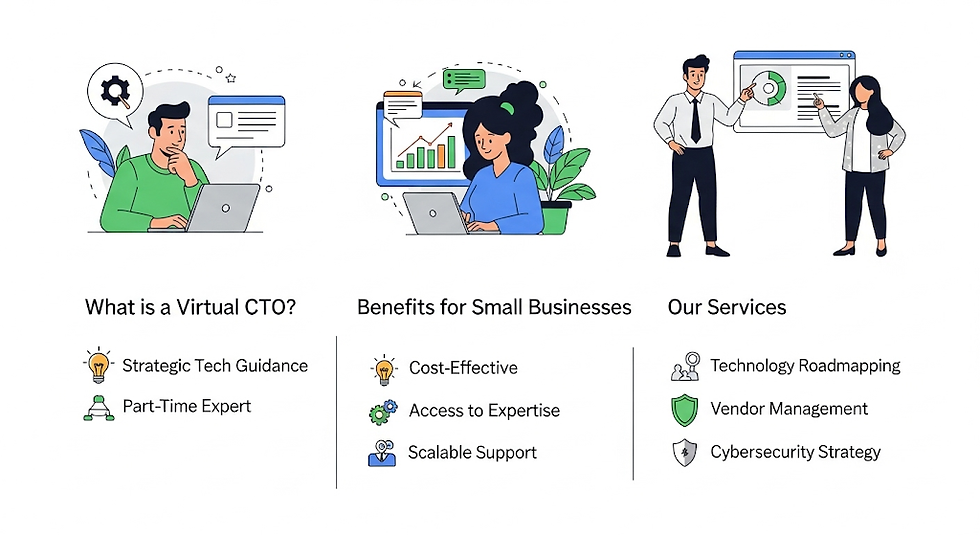Why Your Business Network Services Strategy Is Probably Solving Yesterday's Problems
- Jayant Upadhyaya
- Sep 23
- 4 min read

You know that feeling when you finally upgrade your infrastructure, everything's humming along nicely, and then six months later you realize the solution you implemented is already becoming a bottleneck? Yeah, that's the business network services paradox most companies are trapped in right now.
Here's what's actually happening: while you were busy fixing last quarter's network congestion issues and patching up remote access problems from 2023, the way your team actually uses the network has completely transformed. And honestly? Your current business network services provider probably didn't even notice.
The Planning-to-Implementation Death Valley
Let's talk about something nobody wants to admit. The average business network services project takes anywhere from 3 to 8 months from initial planning to full deployment. Sounds reasonable, right?
Wrong.
Think about what changed in your business during the last eight months. Did you:
Add new SaaS applications your team now depends on?
Shift more workloads to cloud platforms?
Increase your remote workforce?
Start using bandwidth-intensive collaboration tools?
Of course you did. But your network design? It's based on usage patterns from when you started the planning process, which might as well be the Stone Age in technology years.
The Three Ghosts of Network Past
Ghost 1: The Bandwidth Ghost
business network services provider sold you on bandwidth requirements based on your historical usage. But here's the thing - historical usage data is about as useful as a weather forecast from last year.
The real question isn't "how much bandwidth did we use last month?" It's "what's going to break our network three months from now?" Most companies find out the hard way when their shiny new video conferencing system turns their network into digital molasses.
Ghost 2: The Security-as-an-Afterthought Phantom
Remember when network security meant a firewall at the perimeter and maybe a VPN? Those business network services architectures are everywhere, still running, still "protecting" companies that have since moved half their infrastructure to the cloud.
The problem? Your data doesn't live behind that firewall anymore. It's scattered across AWS, Azure, Microsoft 365, and that accounting SaaS platform your CFO insisted on. But your security model still assumes everything important is happening on-premise.
Ghost 3: The Application Performance Specter
Here's a conversation I've had about fifty times: "Our network is fast, but our applications are slow." That's because traditional business network services focus on moving packets quickly, not on how those packets actually translate into user experience.
Your CRM might be loading slowly not because of bandwidth, but because of latency between your office and the cloud data center. Your file server might be choking not from throughput issues, but from the way modern applications handle hundreds of tiny transactions instead of large file transfers.
What Actually Matters Now (And How to Stop Fighting Old Battles)
User Experience Over Infrastructure Metrics
Stop obsessing over bandwidth percentages and ping times. Start measuring what actually impacts your business: application response times, video call quality, and how long it takes someone to access the files they need.
Your business network services strategy should be built around these questions:
Can sales access the CRM instantly when they're on a client call?
Does the design team's rendering software actually work from home?
Can your CEO join a video call from the airport without looking like a buffering nightmare?
Cloud-First, Not Cloud-Also
If your business network services architecture treats cloud connectivity as just another internet connection, you're doing it wrong. Cloud resources aren't "external" anymore - they're core infrastructure.
This means:
Direct cloud connectivity that bypasses the traditional internet path
Network designs that prioritize cloud-to-cloud communication
Security models that protect data in motion between cloud services
Predictive Capacity Planning
Instead of looking backward at last quarter's usage, you need business network services that can actually predict what's coming. This means understanding:
Which new applications are in your pipeline
How your business growth plans will impact network demand
What seasonal variations actually look like in your industry
How work-from-anywhere policies are evolving
The Uncomfortable Questions You Should Ask Your Provider
Want to know if your business network services strategy is stuck in the past? Ask your provider these questions:
"How will this design handle our bandwidth needs in 18 months, and what's your data source for that projection?"
"Show me how application performance monitoring is built into this solution, not bolted on later."
"What happens to our network when [insert your newest cloud application] goes live?"
"How does this architecture handle the fact that 40% of our team now works from coffee shops and home offices?"
If they start talking about percentages and protocols instead of business outcomes and user experience, you've got your answer.
Moving Forward Without Looking Backward
The brutal truth? Most business network services strategies are essentially elaborate rearview mirrors - perfectly designed to see where you've been while you barrel forward into new technology territory.
Breaking this cycle means shifting from reactive infrastructure planning to proactive business enablement. It means choosing providers who spend more time understanding your business roadmap than they do analyzing your historical bandwidth charts.
Because here's what I've learned after working with dozens of companies on their network infrastructure: the businesses that thrive aren't the ones with the fastest networks or the most bandwidth. They're the ones whose business network services actually align with where they're going, not where they've been.
Your network should be enabling your next business move, not commemorating your last one.






Comments